Benefits of Chaga Mushroom: Foraging, Preservation, And Consumption
Posted by Troy Cosky, Founder FunGuy Grow Supply on 14th Dec 2023
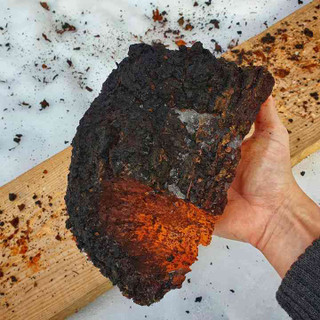
As you venture into the forest, keep your eyes peeled on birch trees; that's where you'll spot this dark, clinker-like fungus. Foraging chaga isn't just a walk in the woods; it's a step towards embracing nature's pharmacy. You'll learn to identify, sustainably harvest, and preserve this remarkable mushroom. Packed with antioxidants, chaga boasts potential health benefits that could bolster your immune system and even slow aging. In your kitchen, you'll transform this tough conk into teas, tinctures, and powders that integrate easily into your daily routine. Dive into the world of chaga and discover how foraging, preserving, and consuming this mushroom can fortify your well-being.
Key Takeaways
- Chaga mushrooms are known for their high content of betulinic acid and antioxidants.
- They have cancer-fighting properties and can inhibit tumor growth.
- Sustainable foraging practices should be followed to protect the Chaga mushroom population.
- Consult with a doctor before consuming Chaga and follow dosage recommendations to avoid adverse effects.
What is Chaga and Where Does It Grow?
Foraging for chaga mushrooms involves searching for their growth on birch trees in specific regions. So, what is chaga mushroom exactly? Chaga mushroom, scientifically known as Inonotus obliquus, is a type of fungus that parasitically grows on birch trees in the northern hemisphere. It is a unique-looking mushroom, with a hard, dark brown, and crusty exterior that can range in size from a golf ball to a large pumpkin. But what makes chaga mushrooms so special? Well, they are known for their numerous health benefits.

One of the key benefits of chaga mushrooms is their high content of betulinic acid, which is found in the bark of birch trees. This compound has been found to possess anti-cancer properties, making chaga a potential natural remedy for cancer prevention and treatment. Additionally, chaga mushrooms are rich in antioxidants, which help to neutralize harmful free radicals in the body and support overall health.
So, where does chaga mushroom grow? Chaga mushrooms primarily grow on birch trees, although they can also be found on other hardwood trees like elm, maple, and alder. However, birch trees are the preferred host due to the higher levels of betulinic acid in their bark. Chaga mushrooms thrive in old-growth forests, where the birch trees are large and have a slow growth rate. These mushrooms are commonly found in eastern Europe, northern Russia, and certain parts of Canada and the northern United States, particularly Maine.
History of Use
You have likely heard about the rich history of Chaga mushroom's use in traditional medicine and cultural practices. For centuries, people in various parts of the world, including northern Europe, Canada, China, Finland, and Russia, have respected and utilized the medicinal properties of Chaga. In Russian herbalism and Siberian folk medicine, Chaga played a significant role in boosting immunity, increasing energy, and aiding digestion. The Siberian people even believed in its ability to promote longevity, while Chinese medicine hailed it as the 'king of herbs'. Chaga's popularity in the Western world soared after Aleksandr Solzhenitsyn wrote about its potential in treating cancer in his book 'The Cancer Ward'. As a result, Chaga has gained a reputation as a superfood and tonic that can boost immunity and help prevent diseases.
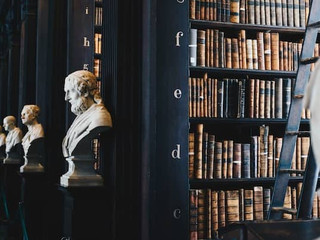
Chaga Mushroom Characteristics:
- Chaga mushroom is a fungus that grows on old-growth birch trees.
- It has a distinctive black, charcoal-like appearance.
- Chaga contains various beneficial compounds, such as betulinic acid and polysaccharides.
Pros:
- Chaga has potent disease-fighting properties, including anti-inflammatory and antioxidant effects.
- It can strengthen the immune system and support overall health.
- Chaga has been used traditionally to treat a range of ailments, from digestive issues to skin inflammation.
Cons:
- Chaga may interact with certain medications, so it's important to consult a healthcare professional before using it.
- Some people may be allergic to Chaga, resulting in adverse reactions.
- The quality and potency of Chaga products can vary, so it's crucial to source them from reputable sources.
Potential Health Benefits of Chaga Mushrooms
You'll be amazed to discover the incredible health benefits of chaga mushrooms. These mushrooms are packed with immune-boosting antioxidants, have cancer-fighting properties, and act as antimicrobial and anti-inflammatory agents. Additionally, chaga mushrooms provide essential nutrients for overall health and wellness. Let's explore all the amazing benefits that chaga mushrooms have to offer.
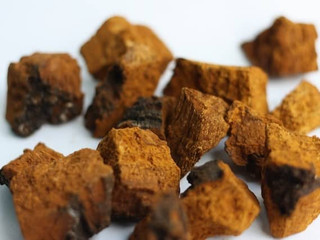
Immune-Boosting Antioxidants
One significant benefit of chaga mushroom is its high concentration of immune-boosting antioxidants, specifically beta-glucans. These antioxidants play a crucial role in supporting our overall health and well-being. Chaga mushrooms are known to have a higher antioxidant level than other common foods, making them a powerful addition to our diet. The immune-boosting properties of chaga mushrooms help strengthen our immune system, enabling it to better fight off infections and diseases. By protecting against damage to cellular tissue and DNA structure, these antioxidants help reduce the risk of chronic diseases such as heart disease, cancer, and diabetes. Incorporating chaga mushrooms into our diet can provide us with these powerful immune-boosting antioxidants and contribute to our overall health and vitality.
Cancer-Fighting Properties
Let's dive deeper, and explore the cancer-fighting properties of the chaga mushroom including its ability to inhibit tumor growth and induce cell death in various types of cancers. Here are some of the benefits of chaga mushroom in fighting cancer:
- Betulinic Acid: Chaga mushroom contains betulinic acid, which has been found to have anti-tumor properties. It can effectively target and destroy cancer cells in breast, lung, cervical, and stomach cancers.
- Immune System Support: Chaga mushroom boosts the immune system, helping the body to fight against cancer cells and prevent their spread.
- Antioxidants: Chaga mushroom is rich in antioxidants that help to neutralize harmful free radicals and reduce oxidative stress, which can contribute to the development of cancer.
- Chaga Tea: Consuming chaga mushroom as a tea is a popular way to reap its cancer-fighting benefits. The tea can be brewed by steeping chaga mushroom chunks in hot water, allowing the beneficial compounds to be released.
With its potent cancer-fighting properties, chaga mushroom is a promising natural remedy in the battle against cancer. Chaga mushroom is also known for its antimicrobial and anti-inflammatory properties.
Antimicrobial and Anti-Inflammatory Agent
Chaga mushroom is an effective antimicrobial and anti-inflammatory agent that offers numerous health benefits. Its antimicrobial elements, such as behenic acid and betulinic acid, help protect the body against infections and illnesses. The presence of these compounds makes chaga mushroom a powerful tool in maintaining a healthy immune system.
Additionally, its anti-inflammatory properties can help reduce inflammation in the body, alleviating symptoms associated with conditions like arthritis and asthma. To reap the benefits of chaga mushroom, it can be consumed in various forms, such as chaga tea or chaga tincture.
These preparations can be made by steeping chaga mushroom in hot water or alcohol, respectively. By incorporating chaga mushroom into our daily routine, we can harness its antimicrobial and anti-inflammatory properties to support our overall health and wellness.
Nutrients for Overall Health and Wellness
As we delve into the topic of 'Nutrients for Overall Health and Wellness (Chaga Mushroom's Health Benefits)', it is important to highlight the various nutrients found in chaga mushroom that contribute to our overall well-being. Here are some key nutrients found in chaga mushroom and their benefits:
- Vitamins and minerals: Chaga mushroom is packed with essential vitamins and minerals, including magnesium, potassium, calcium, zinc, iron, and copper. These nutrients play a crucial role in supporting various bodily functions and maintaining overall health.
- Polysaccharides, phytosterols, triterpenoids, and ergosterols: These compounds found in chaga mushroom have been shown to support the immune system, boost energy production, and promote healthy skin.
- Melanin, sesquiterpenes, antioxidant enzymes, amino acids, and fiber: These components of chaga mushroom can improve gut health and aid in digestion. They also possess antioxidant properties, which help protect the body against oxidative stress and damage.
Other Chaga Mushroom Benefits
Having disscused the key nutrients found in chaga mushroom and their benefits for overall health and wellness, it is important to highlight additional health benefits that this remarkable fungus offers. Chaga mushroom has been found to have inhibitions on Cesium-137, a radioactive isotope that can be harmful to the body. By blocking the absorption of Cesium-137, chaga mushroom helps protect the body from its harmful effects. Additionally, chaga mushroom has the ability to increase antioxidant enzymes such as superoxide dismutase, which helps fight against oxidative stress and free radicals in the body. This powerful antioxidant activity can contribute to a stronger immune system and overall well-being. To summarize the health benefits of chaga mushroom:
| Health Benefit | Description |
|---|---|
| Inhibition of Cesium-137 | Protects the body from harmful effects of radioactive isotope |
| Increased antioxidant enzymes | Fights against oxidative stress and free radicals |
Best Types of Chaga Mushrooms to Consume
Many prefer consuming mature chaga mushrooms harvested from old-growth forests for their higher levels of adaptogenic potency and immune-boosting compounds. These mushrooms have had the opportunity to mature for at least five years, which exposes them to extremely cold temperatures in the winter. This cold exposure helps develop their adaptogenic potency, making them more effective in providing health benefits. Additionally, mature chaga mushrooms have higher levels of beta-glucans and other immune-boosting compounds, making them an ideal choice for consumption.
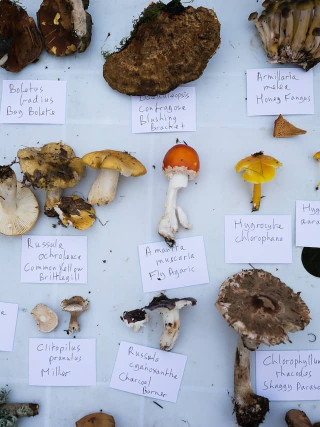
Chaga Mushroom Quality Attributes:
- Harvested from old-growth forests
- Matured for at least five years
- Exposed to extremely cold temperatures
Pros:
- Higher adaptogenic potency
- Increased levels of immune-boosting compounds
- More effective in providing health benefits
Cons:
- May be more difficult to find compared to younger chaga mushrooms
- Limited availability in areas without old-growth forests
- Can be more expensive due to their rarity
Foraging for Chaga Sustainably
To forage for Chaga sustainably, one must adhere to responsible harvesting practices and prioritize the preservation of the species. Here are some key guidelines to follow:
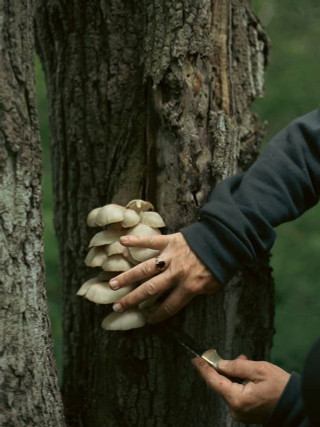
- Respect legal regulations: Before embarking on a Chaga foraging expedition, it is crucial to familiarize oneself with the specific regulations governing the harvesting of Chaga in the region. This ensures that you are in compliance with the law and helps protect the sustainability of the species.
- Leave enough for regeneration: When harvesting Chaga, it is essential to take only what is necessary and leave at least one-third of the mushroom's body intact. By doing so, we allow the Chaga to regenerate and continue its growth, ensuring its long-term survival in the ecosystem.
- Avoid damaging the tree: The cambium layer of the birch tree, on which Chaga grows, is vital for its survival. To prevent harm to the tree, it is crucial to harvest Chaga responsibly. This can be achieved by carefully removing the Chaga without causing significant damage to the tree's bark or cambium layer.
- Rotate harvesting locations: To promote sustainable Chaga foraging, it is advisable to harvest from different birch trees rather than repeatedly targeting the same ones. This practice allows sufficient time for Chaga to regenerate on each tree, preventing overexploitation and ensuring a healthy population of Chaga in the forest.
Preservation and Preparation of Chaga Mushroom
When it comes to preserving and preparing Chaga mushrooms, there are a few options to consider. One method is freezing the mushroom, which helps to retain its nutrients and flavor. Another option is making Chaga extract, which involves steeping the mushroom in hot water to create a potent and healthful liquid. Lastly, you can also make Chaga powder by grinding dried Chaga mushrooms into a fine consistency, which can be used in various recipes and beverages.
Freezing Chaga Mushroom
Freezing Chaga Mushroom is a simple and effective method for preserving and preparing this powerful medicinal fungus. Here's how to freeze Chaga and keep it fresh for months:
- Harvest and clean: After harvesting Chaga, clean off any dirt or debris by gently brushing it. Make sure to remove any bark or wood particles.
- Cut and portion: Use a sharp knife to cut the Chaga into smaller, manageable pieces. This will make it easier to handle and thaw when you're ready to use it.
- Store in airtight containers: Place the cut Chaga into airtight containers or freezer bags. Make sure to remove as much air as possible to prevent freezer burn.
- Freeze and thaw: Put the containers in the freezer and store for up to six months. When you're ready to use the Chaga, simply take it out and let it thaw before incorporating it into your favorite Chaga recipe.
Making Chaga Extract
You can make Chaga extract by grinding the mushroom into a fine powder and simmering it in boiling water for several hours. This process helps to release the beneficial compounds found in the Chaga mushroom. After the simmering is complete, strain the liquid and store it in a jar. The resulting extract of chaga has a deep brown color and a rich, earthy flavor. It can be consumed on its own or added to various recipes and beverages. To preserve the extract, keep it in the fridge, where it can stay fresh for up to two weeks. Making Chaga extract is a simple and effective way to enjoy the many health benefits of this incredible mushroom.

Making Chaga Powder
To further explore the preservation and preparation of Chaga mushroom, let's delve into the process of creating Chaga powder.
- Start by drying the Chaga in a warm, dry place until it is completely dehydrated. This step is crucial to remove any moisture and prevent spoilage.
- Once the Chaga is dry, grind it into a fine powder using a blender or a coffee grinder. This will make it easier to incorporate into recipes and consume.
- Store the Chaga powder in an airtight container to maintain its freshness and potency. It can be kept in a cool, dry place for up to six months.
- When using the Chaga powder, simply add it to your favorite dishes or beverages. You can mix it into smoothies, make Chaga-infused coffee, or even incorporate it into soups and stews for a boost of flavor and health benefits.
Creating Chaga powder is an excellent preservation method for long-term storage, allowing you to enjoy the benefits of Chaga all year round.
Chaga Mushroom Benefits and Uses
Now let's talk about the benefits and uses of Chaga mushrooms. Chaga offers a wide range of advantages, including its high concentration of antioxidants that protect against cellular damage and its anti-inflammatory and antiviral properties that boost the immune system. As for its uses, Chaga can be added to various dishes like soups, stews, and smoothies, or even used as a coffee substitute. However, it is important to be cautious and consult with a doctor before consuming Chaga, as certain medications and allergies may interact with it.
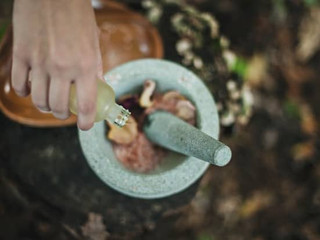
Chaga Benefits:
One of the most impressive benefits of chaga mushrooms is their high concentration of antioxidants. These powerful substances help protect the body from oxidative stress and damage caused by free radicals. But that's not all chaga has to offer. Here are four more benefits of chaga mushrooms:
- Adaptogenic compounds: Chaga contains adaptogens, which are substances that help the body adapt to stress and maintain balance. These compounds can support the body's response to physical, mental, and emotional stressors.
- Anti-tumor compounds: Chaga mushrooms have been found to contain compounds that may help inhibit the growth of cancer cells. While more research is needed, early studies suggest that chaga could potentially have anti-cancer properties.
- Anti-inflammatory properties: Chaga has been used for centuries to reduce inflammation in the body. It may help alleviate symptoms of inflammatory conditions like arthritis and promote overall wellness.
- Immune system support: Chaga mushrooms are known for their immune-boosting properties. They can help strengthen the immune system, making it more resilient against infections and diseases.
Adding chaga mushrooms into your diet can provide a range of health benefits, but it's important to consult with a healthcare professional before making any significant changes to your routine.
How to Use Chaga Mushroom:
There are many exciting ways to incorporate chaga mushrooms into your daily routine. Chaga can be added to soups, stews, and even lattes, providing a rich and earthy flavor. As a coffee substitute, chaga offers a caffeine-free alternative that still delivers a robust taste. Additionally, chaga can be used as a fire starter, making it a versatile option for outdoor enthusiasts. To further illustrate the different uses of chaga mushrooms, here is a table showcasing three popular methods of consumption:
| Method | Description |
|---|---|
| Soups/Stews | Add chaga to enhance the taste and nutritional value of your dishes. |
| Lattes | Brew chaga tea and mix it with your favorite milk for a cozy drink. |
| Coffee Substitute | Replace your regular coffee with chaga for a unique caffeine-free option. |
Precautions when Using Chaga Mushroom:
It is important to be aware of the precautions when using chaga mushroom for its benefits and uses. Here are some precautions to keep in mind:
- Consult with your doctor: If you are on certain medications or have allergies, it is crucial to consult with your doctor before consuming chaga mushroom. They can provide guidance on potential interactions or allergic reactions.
- Follow dosage recommendations: Chaga mushroom should be taken in the recommended dosage. Excessive consumption may lead to adverse effects, so it is essential to follow the instructions carefully.
- Purchase from reputable suppliers: To ensure quality and purity, it is advisable to purchase chaga mushroom from reputable suppliers. This helps to avoid any contamination or low-quality products that may not provide the desired benefits.
- Be cautious of side effects: While chaga mushroom is generally safe for consumption, some individuals may experience side effects such as digestive discomfort or allergic reactions. If you notice any adverse effects, discontinue use and consult with a healthcare professional.
Ways of Preparing Chaga for Consumption
When it comes to preparing Chaga for consumption, there are a few different options to consider. Making Chaga tea is a popular choice, as it allows you to enjoy the benefits of the mushroom in a warm and comforting drink. Another option is making Chaga tincture, which is a more concentrated form that can be added to dishes or taken as a supplement. Additionally, there are various recipes available that incorporate Chaga, but it's important to be aware of any potential risks or side effects before consuming.
Making Chaga Tea
To prepare Chaga tea for consumption, start by finding and harvesting Chaga mushrooms. Once you have collected the Chaga, make sure to dry it thoroughly before using it in your tea. Here is how to make my Chaga tea:

- Drying the Chaga: Dry the Chaga by leaving it out in the sun, using a food dehydrator, or using an oven at a low temperature.
- Brewing the tea: Add a piece of the dried Chaga to boiling water and let it simmer for at least an hour to fully extract the active ingredients.
- Adding flavor: For extra flavor and nutrients, you can add honey, ginger, or cinnamon to the Chaga tea. These spices not only enhance the taste but also offer additional health benefits.
- Alternative methods: If you don't have time to simmer the tea for an hour, you can also use a slow cooker or pressure cooker to make Chaga tea. You simply add the dried Chaga and water to the cooker, set the temperature, and let it cook for several hours until the tea is fully infused.
Now that we know how to make Chaga tea, let's move on to the next section about making Chaga tincture.
Making Chaga Tincture
After successfully making Chaga tea, let's move on to exploring the ways of preparing Chaga for consumption as a tincture. To make a Chaga tincture, you can either purchase a high-quality extract or make your own. If you choose to make your own, start by soaking dried Chaga in alcohol for several weeks. This allows the active compounds in the Chaga to infuse into the alcohol.
Once the extract is ready, you can take it directly by adding a few drops to your tongue or mixing it into other drinks or dishes. The tincture offers a convenient way to consume Chaga and allows for easy dosing. Plus, it can be stored for a long time, making it a great option for preserving Chaga's beneficial properties.
Recipes for Chaga
You'll love experimenting with different recipes to prepare Chaga for consumption. One amazing way to enjoy Chaga is by making a warm and comforting chaga latte. It's simple to make - just add a few drops of Chaga extract to your favorite milk, sweeten it to taste, and heat it up on the stove. The result is a creamy and rich beverage with a hint of earthiness.
Another fun way to incorporate Chaga into your diet is by infusing it into alcohol. You can create a unique and flavorful cocktail by infusing vodka or other spirits with Chaga. Simply add a few pieces of Chaga to a bottle of alcohol and let it sit for a few weeks. The Chaga will infuse into the alcohol, giving it a distinct taste.
When preparing Chaga in recipes, it's important to remember that it has a strong, earthy flavor that may not be appealing to everyone. Start with small amounts of Chaga and experiment with different ingredients and flavorings until you find a combination that works for you.
Chaga Recipe Ingredients:
- Chaga extract or Chaga pieces
- Milk or alternative milk
- Sweetener of your choice
- Vodka or other spirits
Pros:
- Adds a unique and earthy flavor to recipes
- Provides potential health benefits
- Can be incorporated into a variety of dishes and drinks
Cons:
- Strong earthy flavor may not be appealing to everyone
- Chaga can be expensive or difficult to find
- May require experimentation to find the right combination of ingredients
Health Risks and Side Effects of Chaga Mushrooms
When preparing Chaga for consumption, it is important to be aware of the potential risks and side effects. While Chaga is generally safe, it's always wise to exercise caution and follow these guidelines:
- Start with a smaller dosage: Begin with a lower amount of Chaga tea or tincture to gauge your body's reaction. This helps minimize the risk of any adverse effects.
- Gradually increase dosage: Slowly increase the Chaga dosage over time. This allows your body to adjust and reduces the likelihood of experiencing negative reactions.
- Limit intake: Adults should generally consume no more than 3-4 grams of Chaga extract per day. It's important to adhere to this recommended shroom dosage to avoid any potential side effects.
- Monitor for allergies or sensitivities: Keep an eye out for any allergic reactions or sensitivities. If you experience symptoms like skin rashes, itching, or gastrointestinal issues, discontinue Chaga consumption and consult a healthcare professional.
Conclusion
In conclusion, incorporating Chaga into your regular diet can be a game-changer for your overall health and well-being. The numerous benefits of Chaga, from boosting immunity to inhibiting cancer cell growth, make it a powerful natural ingredient that you'll be grateful to have discovered. By embracing sustainable foraging practices and respecting legal regulations, you can ensure that you're not harming the environment while enjoying the benefits of Chaga.
Table: Benefits of Incorporating Chaga into my Diet
| Benefit | Description | Impact on Your Health and Well-being |
|---|---|---|
| Boosts immunity | Chaga contains antioxidants and immune-stimulating compounds that strengthen the immune system. | Fewer illnesses and infections. |
| Increases energy | Chaga helps improve energy production in the body, leaving you feeling more energized throughout the day. | More stamina and vitality. |
| Supports overall wellness | The medicinal properties of Chaga contribute to your overall well-being, promoting a healthier lifestyle. | Feeling more balanced and in tune with my body. |
By incorporating Chaga into your diet, you'll find a convenient and enjoyable way to reap its benefits. Whether you choose to make Chaga tea, tincture, or add it to your favorite recipes, the possibilities are endless. Of course, it's important to consult a healthcare professional before consuming Chaga, especially if you have allergies or take medications for other purposes. Taking this precaution ensures that you can safely enjoy the positive impact that Chaga has on your immune system and general wellness.
Start Your Sustainable Mushroom Cultivation Journey
Ready to start growing your own mushrooms sustainably? Check out FunGuy Grow Supply, your ultimate destination for top-quality mushroom growing supplies. From mushroom grow kits to grow bags and spawn, we have everything you need to get started. Shop now and make your mushroom growing dreams a reality!
Frequently Asked Questions
Are There Any Potential Side Effects or Risks Associated With Consuming Chaga Mushrooms?
There might be potential side effects or risks associated with consuming chaga mushrooms. It's important to note that every individual may react differently. It's advised to consult with a healthcare professional before incorporating chaga mushrooms into your diet, especially if you have any pre-existing medical conditions or are taking medications. Possible side effects may include gastrointestinal discomfort, allergic reactions, or interactions with certain medications. It's always better to err on the side of caution and seek professional advice.
Can Chaga Mushrooms Be Used as a Natural Remedy for Specific Health Conditions?
Chaga mushrooms have been used as a natural remedy for various health conditions. They have been known to boost the immune system, reduce inflammation, and help with digestion. Additionally, chaga mushrooms are rich in antioxidants, which can aid in fighting free radicals and promoting overall wellness. However, it is important to note that while chaga mushrooms may offer potential health benefits, it is always best to consult with a healthcare professional before using them as a remedy for specific health conditions.
How Long Does It Take for Chaga Mushrooms to Grow and Reach Their Optimum Maturity?
It takes several years for chaga mushrooms to grow and reach their optimum maturity. The exact time can vary depending on various factors such as the environment and availability of nutrients. However, on average, it can take anywhere from 5 to 20 years for chaga mushrooms to fully develop. During this time, they absorb nutrients from their host tree, which contributes to their medicinal properties. Once mature, chaga mushrooms can be harvested and used for their numerous health benefits.
Can Chaga Mushrooms Be Consumed by Pregnant Women or Individuals With Specific Medical Conditions?
It's important for pregnant women and individuals with specific medical conditions to consult with a healthcare professional before consuming chaga mushrooms. There may be potential risks or interactions that need to be considered. It's always best to prioritize your health and seek personalized advice from a qualified medical expert. They can provide you with the most accurate and up-to-date information based on your specific circumstances.
Are There Any Specific Guidelines or Precautions to Follow When Foraging for Chaga Mushrooms to Ensure Sustainability and Protect the Environment?
When foraging for chaga mushrooms, it is important to follow specific guidelines to ensure sustainability and protect the environment. This includes not removing the entire mushroom, but instead harvesting only a portion to allow for regrowth. It is also crucial to avoid damaging the tree from which the mushroom grows, as well as respecting any regulations or restrictions in place. By practicing responsible foraging techniques, we can help maintain the delicate balance of the ecosystem.
References
- Botanica Press. (2002). Medicinal Mushrooms: An Exploration of Tradition, Healing, & Culture (Herbs and Health Series) (New edition). ISBN-10: 1570671435.
- Wolfe, D., Beaumier, P., & Saad, R. (2012). Chaga: King of the medicinal mushrooms (1st ed.). North Atlantic Books. ISBN-10: 1583944990.

